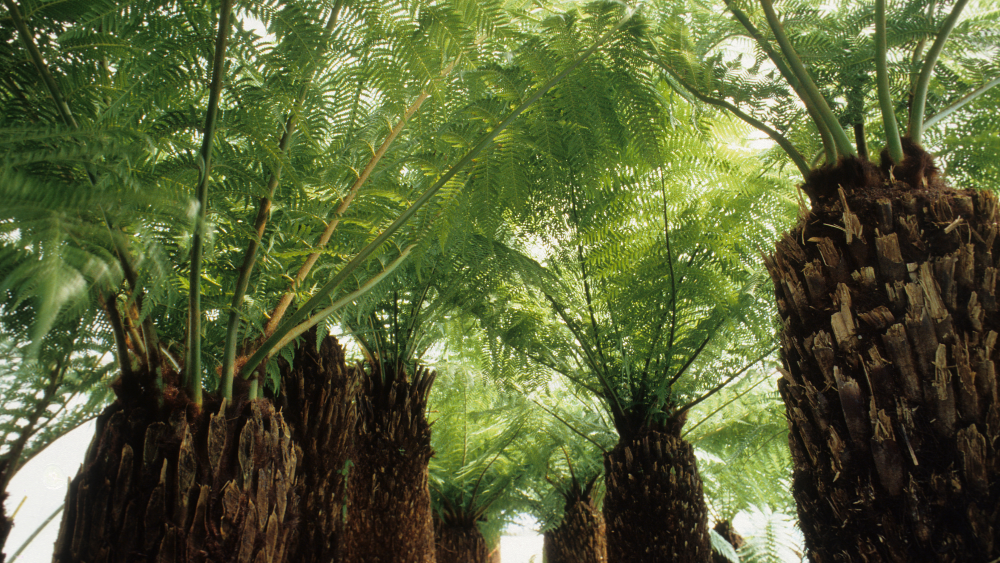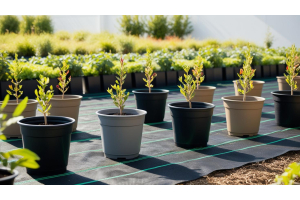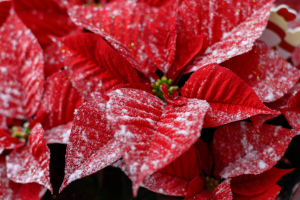How to Protect and Care for Your Tree Ferns in Winter

With their tall trunks and lavish fronds, tree ferns are a stunning addition to any garden. However, these tropical plants require special care, especially during the cold winter months. This comprehensive guide will provide you with all the information you need to protect and care for your tree ferns during winter. We've got you covered, from winter protection methods to suitable planting techniques.
Why Protect Your Tree Ferns in Winter?
Tree ferns, particularly the popular Dicksonia antarctica species, are not reliably hardy and can be vulnerable to cold temperatures. While these magnificent plants can tolerate temperatures down to about -5˚C, they still require some protection to ensure their survival during winter. You can preserve their beauty and ensure their long-term health by taking the necessary steps to protect your tree ferns.
Winter Protection Methods for Tree Ferns
Step 1: Insulate with Straw
Gently place the straw into the crown of the tree fern, careful not to apply too much pressure and damage the delicate new fronds inside, known as crosiers. This simple method provides sufficient protection for most gardens in mild climates.
Step 2: Wrap with Leaves and Tie
In colder regions or during periods of extreme hard or heavy snow, gather leaves and wrap them around the crown of the tree fern. Secure the leaves by tying them together. This additional layer of insulation helps shield the plant from harsh winter conditions.
Step 3: Layer with Frost Protection Fleece
Wrap the entire tree fern in layers of frost-protection fleece to provide further protection. The number of layers required will depend on the severity of the weather. For added insulation, consider placing a layer of straw beneath the fleece. JFH Horticultural Supply's high-quality frost protection fleece is an excellent choice.
Step 4: Secure with Twine
After wrapping the tree fern with fleece, secure it by tying it with twine. This ensures that the plant remains warm and snug throughout the winter months. JFH horticultural supply offers a range of high-quality twines suitable for securing your tree ferns.
Additional Winter Care Tips for Tree Ferns
Watering
While tree ferns require less water during winter, it is still essential to keep the crown and trunk moist. Monitor the moisture levels and water as needed, ensuring the plant does not dry out completely. Be cautious not to overwater, as excessive moisture can lead to root rot.
Protecting the Crown
The crown of the tree fern is the most vulnerable part during winter. In addition to the protection methods mentioned above, you can use old fronds to wrap over the crown, providing an extra insulation layer. This helps prevent frost damage and ensures the crown remains healthy.
Trimming
Remove any tatty or damaged fronds from your tree fern in early spring. Trimming these unsightly fronds not only improves the plant's overall appearance but also promotes new growth and allows for better airflow.
Transporting Tree Ferns in Winter
In colder months, when you may need to move your tree ferns indoors or to a more sheltered location, it is essential to have suitable containers. JFH Horticultural offers heavy-duty container pots with carry handles, making it easier to transport your tree ferns while ensuring their safety.
Proper planting techniques are crucial to give your tree ferns the best chance of surviving winter. Follow these steps when planting your tree ferns:
Choose a Damp, Shady Spot: Tree ferns thrive in damp and shady areas, away from direct sunlight. Select a location with neutral to acidic soil and good drainage.
Prepare the Soil: Dig a generous hole and add organic matter to improve soil quality. This helps create the ideal growing conditions for your tree ferns.
Planting the Tree Fern: Position the tree fern in the hole, ensuring it stands firm. Backfill the hole and gently compact the soil around the base of the trunk. Avoid planting too deeply, as this can lead to rot.
Staking: While staking is necessary for most tree ferns, larger specimens may require additional support. Use a metal rebar or wire to anchor the trunk securely if needed.
Propagating Tree Ferns
Tree ferns can be propagated through spores, but this method requires patience and time due to their slow growth rate. Alternatively, you can divide established plants to create new ones. Follow these steps to propagate your tree ferns:
- Collect Spores: Harvest spores from mature fronds by placing them in a plastic bag and allowing them to dry. Sow the spores on a suitable growing medium and cover them with a clear plastic bag to create a humid environment.
- Division: Carefully divide an established tree fern by separating the trunk into sections, ensuring each section has roots attached. Replant these divisions in suitable growing conditions and provide proper care.
Common Problems and Troubleshooting
Tree ferns are relatively pest and disease-free. However, they may occasionally encounter the following issues:
Root Rot: Overwatering or poorly draining soil can lead to root rot. To prevent this, ensure proper drainage and water your tree ferns sparingly during winter.
Frost Damage: Insufficient protection during frosty periods can cause damage to the fronds and crown. Follow the winter protection methods outlined earlier to safeguard your tree ferns from frost.
With their majestic appearance and lush fronds, tree ferns bring any garden a touch of the tropics. By taking the necessary steps to protect and care for your tree ferns during winter, you can enjoy their beauty year after year. Remember to insulate with straw, wrap with leaves and frost protection fleece, and secure with twine. Ensure adequate water, protect the crown, and trim tatty fronds. With these winter care tips and proper planting techniques, your tree ferns will thrive and continue to enhance your garden for years.











